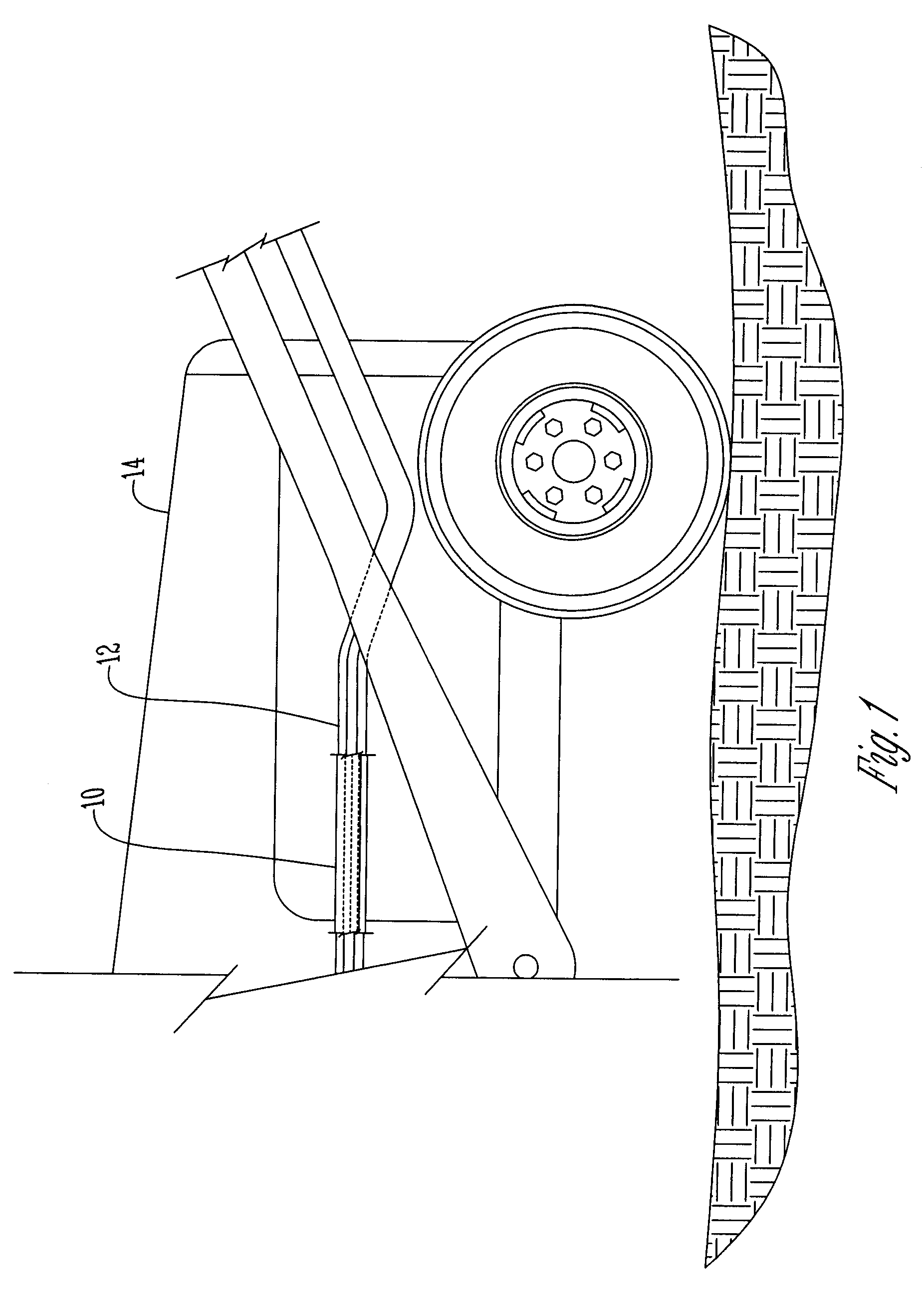Reusable hose bundling sleeve
- Summary
- Abstract
- Description
- Claims
- Application Information
AI Technical Summary
Benefits of technology
Problems solved by technology
Method used
Image
Examples
Embodiment Construction
[0031] With respect to FIG. 1, a hose sleeve 10 is disclosed for use with bundling hydraulic hoses 12 typically found on heavy machinery 14 or other vehicles. Hose sleeve 10 also may be used with electrical cables, fiber optic lines, and any other type of conduit. Further, hose sleeve 10 may be used on any number of applications other than vehicles. For example, hose sleeve 10 also may be used to protect data lines running through the walls or ceilings of a home or office building. Hose sleeve 10 protects hydraulic hoses 12 or any other conduits traveling within from abrasion caused by vibration and heat as well as degradation from exposure to UV radiation.
[0032] With respect to FIGS. 2-6, hose sleeve 10 includes an elongated section of material 16. Elongated section of material 16 includes a front surface 18 (FIG. 4) opposite a reverse surface 20 (FIG. 3). Elongated section of material 16 also includes a first edge 22 opposite a second edge 24. As depicted in FIGS. 3A and 4A, firs...
PUM
| Property | Measurement | Unit |
|---|---|---|
| Length | aaaaa | aaaaa |
| Width | aaaaa | aaaaa |
Abstract
Description
Claims
Application Information
 Login to View More
Login to View More - R&D
- Intellectual Property
- Life Sciences
- Materials
- Tech Scout
- Unparalleled Data Quality
- Higher Quality Content
- 60% Fewer Hallucinations
Browse by: Latest US Patents, China's latest patents, Technical Efficacy Thesaurus, Application Domain, Technology Topic, Popular Technical Reports.
© 2025 PatSnap. All rights reserved.Legal|Privacy policy|Modern Slavery Act Transparency Statement|Sitemap|About US| Contact US: help@patsnap.com



